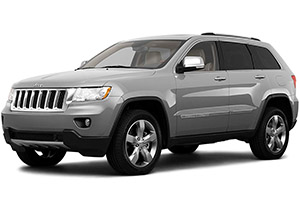Going further: fuses J1, M2 and M15 test ok using a DMM.
Fuse descriptions:
ᐅ Jeep Grand Cherokee (2012 - 2013) Fuse Box Diagram 🔧
The locations are embossed in the bottom of the cover. Hard to see but it is what it is.
Fuse box diagram (fuse layout), location, and assignment of fuses and relays Jeep Grand Cherokee (WK2) (2010, 2011, 2012, 2013).

fusecheck.com
The above has a placement diagram and shows the relays (none of which are shown to pertain to the compressor).
Current state of the system: no compressed air in the reservoir, compressor doesn't kick in when expected. Rear left is very low (there is probably a little air in the spring), other three corners are at normal ride height.
I need to know how the QL air compressor is directly driven and if there is a relay and/or fuse in the circuit.
Update: Ran a few of the active diagnostic routines; some of them returned "airmass too low", none of them ran the compressor. However - I was able to get the compressor to run (and it sounds normal, woohoo) with the following:
1) cleared the codes; some of the diag routines set C2212 so you'll need to unset it if it appears. One of the original codes indicated the compressor was over temp. That was likely set yesterday.
2) using AlfaOBD, set the drive level to Park. The compressor ran, pulling air from the other three springs into the reservoir
3) set the drive level to Aero. The compressor ran, filling the 4 springs. I'm not sure if it pulled in outside air however. I don't know how to 'force' that to happen - eg fill the reservoir to full capacity...
Now, I have a level car. I still have a small leak at the left rear, able to be heard when placing my head close to the outside of the wheel. And - the two ride level buttons are flashing in an unusual manner: the High button's 3 leds are all flashing, and one of the Low button's leds (edit: the lowest one, so from back to front: flash off off flash flash flash) is flashing; all 4 at the same time, about once per second.
Still would love to find out if the compressor has a relay and/or fuse, outside of the TPIM's 3 fuses. And - how does the system determine it needs to pull in outside air? If there's a detailed tech writeup somewhere, I would be glad to geek out!









